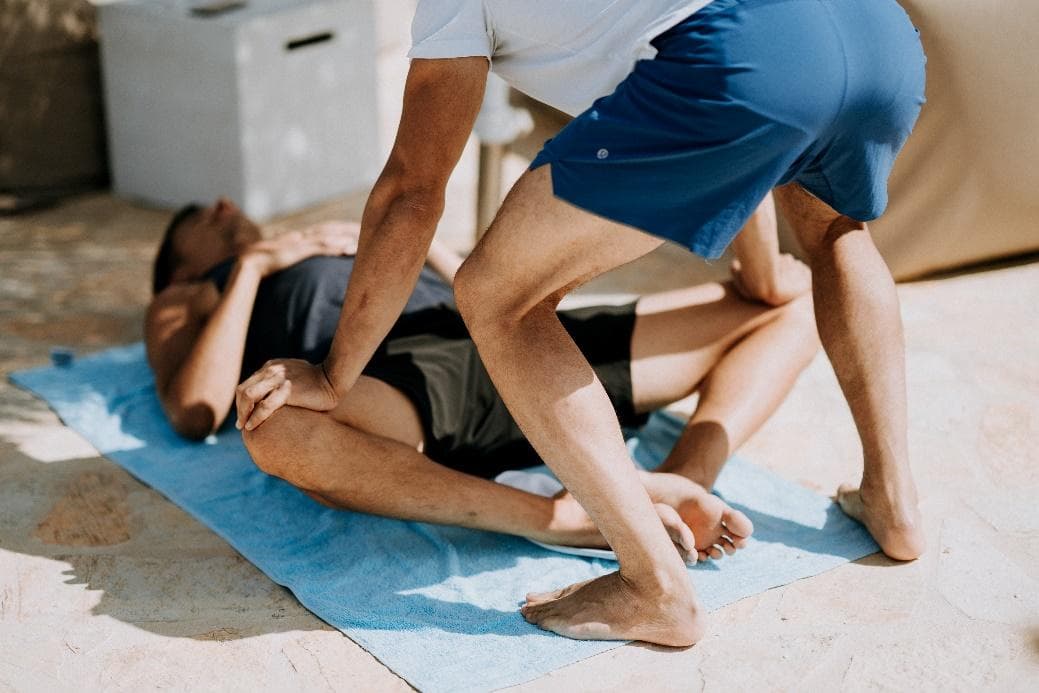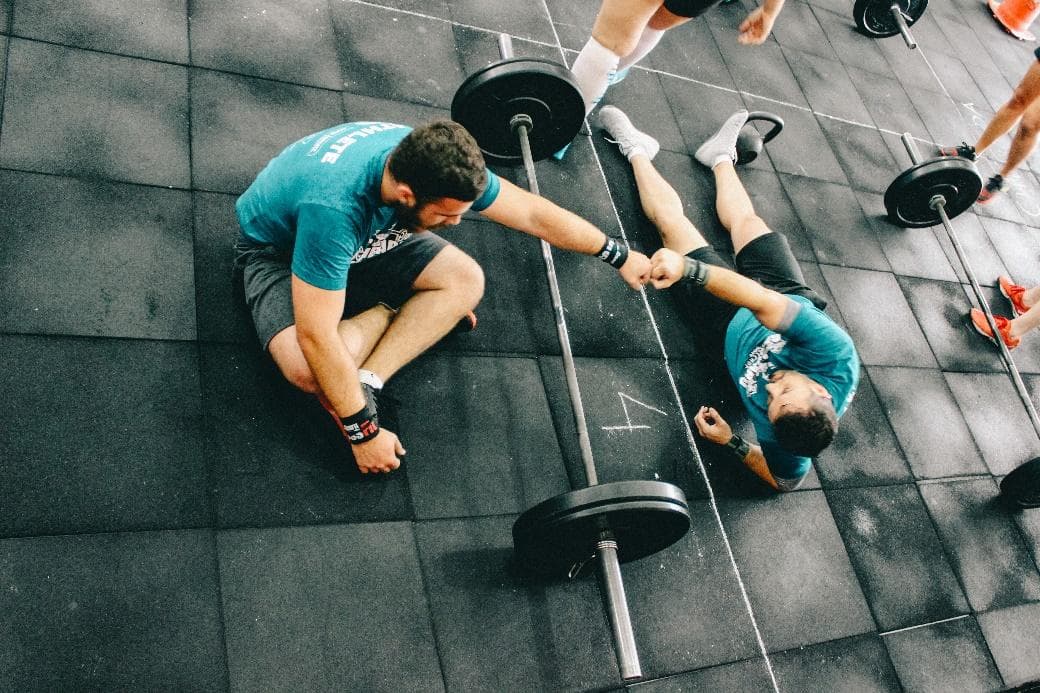20 de November de 2022
How Many Days Should I Rest Per Week?
Surely, you’ve already taken a multiple-choice test or had an option in which all the previous ones were correct. That happens when we ask ourselves “how many days of rest should I have per week?” Multiple answers are valid since there is no single solution. It will depend on our level of training, the qualities we are looking to develop and the intensity and volume we need to complete in the week.
Analogy of rest days and glasses of wine

An analogy I often use when people ask me how many days a week they should take is between a break and a bottle of wine. Imagine you have a bottle of wine at home and on a Monday after work you open it to have a glass. There are several possible scenarios: 1) in a matter of a couple of hours you finish the bottle; 2) you drink half a bottle and another day, Thursday, for example, you finish the other half; 3) you drink a glass on Monday, another on Wednesday, another on Friday and another on Saturday; 4) you drink a glass every day of the week, dividing the wine among the seven days of the week.
Which of the above scenarios will be best? Here’s the answer to how many rest days a week are recommended. Weekend warriors grab their bike and go out on Sunday for hours, but the rest of the week they do nothing. That scenario would be like drinking the bottle of wine in a few hours. Then we have the people who train two days a week and remaining rest, those who train three days a week, four, five, six or every day of the week. Which option do you think is better?
The more training days we have per week, which means fewer days of rest, the more we can enjoy the wine, its aroma and taste, and the less side effects and hangover, it will leave us from drinking too much at once. Even training more days will allow us to drink a second bottle of wine because our body tolerates it well, which in training will mean a higher volume of training with less fatigue. Of course, the idea is not to drink a bottle of wine every day, but to expand that wine, the volume of training, throughout the week.
How many days should you rest per week? There’s no answer.
Once you understand that if you spread your training volume over more days per week (or fewer rest days), your sessions will be of higher quality, the answer is clear: don’t rest any day of the week. But if you are a beginner and you need a low weekly volume you can rest two or three days a week. And if you are a beginner, but you need to improve your mobility a lot? Then dedicate those “rest” days to mobility exercises. What if I get stressed or obsessed with training? Then you need several days of rest, even away from training for a full week.
The conclusion usually goes at the end of the articles, but in this case, we add it here: no one, except you and your coach, knows how many days you should rest per week. Multiple factors play a role, such as your level of training, the fatigue of the last session, the stress of your day-to-day life, what you eat, how much sleep you get, and so on and so forth. Rest is the time when training adaptations occur, so it is essential, but what is rest?
Invisible training: rest yes, but how?

Is stretching or mobility exercises training or resting? Is putting fatigued muscles in cold water (cryotherapy) training or resting? Is stimulating a muscle group while resting the rest training or resting? For the Royal Spanish Academy of Language, rest is the break or pause in work or fatigue. In elite sports performance there is a condensation of training and competitions that hinder the physical recovery of athletes. A lot of “training” time is aimed at avoiding overtraining and facilitating recovery (Barnett, 2006).
Active recovery is a commonly used technique that includes a variety of submaximal activities such as cycling, swimming, stretching, or any task that facilitates or enhances physiological recovery following exertion (Barnett, 2006). Other active recovery techniques include cold water immersion (cryotherapy), massage, electrostimulation, compression garments, and a few others (Warren, Brown, Landers, & Stahura, 2011).
Passive versus active rest
Therefore, there are two ways to rest or recover. On one side we have the passive rest or passive recovery in which we simply do nothing related to training. On the other side we find the active rest or active recovery with which we try to accelerate recovery and shorten the deadlines to return to maximum training in the minimum possible time (Toubekis et al., 2008). Which of the two types of rest or recovery is better? Theory widely shows active rest as the winner (Ortiz, Sinclair Elder, Elder, & Dawes, 2019), but practice is always different.
Active recovery increases intramuscular blood flow, which improves the elimination of accumulated waste substances, brings nutrients to the muscle, decreases the duration and severity of exercise-induced delayed onset muscle soreness (stiffness) and prevents muscle injuries (Dupuy, Douzi, Theurot, Bosquet, & Dugué, 2018). Thanks to this active rest, the athlete tolerates consistently higher training loads (Jemni, Sands, Friemel, & Delamarche, 2003), as he/she manages to recover his/her pre-exertion values in less time (Suzuki et al., 2004).
There is no doubt: active rest is more interesting than passive rest (Ortiz et al., 2019), so, at a theoretical level, the ideal is not to rest passively any day of the week, using active breaks instead. However, performance does not depend solely and exclusively on the physical realm, since the mental factor also plays a leading role. Theory may tell you that on a Sunday it is best for your physiology to go into a cold room as a method of cryotherapy or full-body cryostimulation, so that you will recover better and be able to train that day as well (Bouzigon et al., 2021). However, your mind may need to go out to the park with your family. Therein lies the art of training and why there is no valid answer to the question “how many days do I need to rest per week?”
How many days should you rest per week to improve strength and muscle mass?

If you control the training load perfectly, you can strength train every day (Perryman, 2013). The formula is as simple as it is complex: the less fatigue, the fewer rest days; the more fatigue, the more rest days. When we talk about fatigue, we must also take into account sleeping between seven and nine hours each day, eating the right nutrients to replenish ourselves and having a healthy lifestyle physically, mentally and socially.
In training, which is our field, fatigue can be regulated by accurate measurements such as those provided by velocity measurement devices (Weakley et al., 2021). When we lift a load we can see how fast it has moved, and that is linked to performance and fatigue. As we do repetitions of a set, the load moves slower. That loss of velocity means that we are accumulating fatigue, so if we control the speed at which we move the first repetitions and the loss of velocity, we can regulate fatigue (Pareja-Blanco, Villalba-Fernández, Cornejo-Daza, Sánchez-Valdepeñas, & González-Badillo, 2019). If we regulate fatigue, we can train more frequently, even daily if fatigue is low.
A loss of velocity of 10% or less with respect to the first repetition hardly generates fatigue, but if we continue performing repetitions until the speed drops by 20% or more that fatigue will be greater (González-Badillo, Yañez-García, Mora-Custodio, & Rodríguez-Rosell, 2017). Therefore, we will need more rest days the more fatigue we accumulate in training.
In the warm-up we can know if we need a break, either active or passive. Once we know the velocity at which we move certain loads, it will be enough to check in the heating that with that same weight the velocity has not decreased. For example, if it is normal to lift 100 kg in bench press at 0.40 m / s, and in the warm-up, we see that that day we move those 100 kg significantly slower, we have accumulated fatigue, so we need to rest.
What if I seek to increase my muscle mass?
All of the above also applies if our main objective is to increase muscle mass, but in this case, we do need to accumulate greater local fatigue in the muscle group worked (Pareja-Blanco et al., 2020). The good thing is that local fatigue needs a local rest, not a general one, as our body may need when we lift very heavy loads or perform high intensity training. In this sense, we can work every day of the week, thus separating the volume more, which will give a higher quality to the workouts.
Remember the bottle of wine and the distribution of glasses throughout the week. When we go to the gym to gain muscle mass we can train four days for two hours per day, or spread those eight total hours throughout the week, resulting in sessions of just over an hour. In both scenarios the time is the same, the difference is that the more volume we do in a single day, the lower the quality and intensity. In addition, since it is very easy to train one muscle group while another rests, we can train every day of the week. To this we must add that high training frequency for each muscle group is key when it comes to gaining muscle mass (Schoenfeld, Grgic, & Krieger, 2019).
How many days should you rest per week to improve endurance?

When we talk about endurance, we follow the same principles we have described so far, but in this case a new variable comes into play because endurance sports involve the same musculature over and over again. While in order to gain strength and muscle mass it will be enough to regulate the intensity and change muscle groups, in endurance we will have to control the risk of repetition injury (Orlando, Levitan, Mittleman, Steele, & Shrier, 2011). One aspect remains clear, and it is described by the following sentence: the fastest triathletes in the middle of Ironman were the ones who rested the fewest days per week (Gilinsky, Hawkins, Tokar, & Cooper, 2014).
Improving endurance requires very high volumes of work, although they must always be adapted to the level. Interestingly when we all had to stop in 2020 because of the global pandemic there were improvements in the performance of many endurance athletes. Training less made them improve more. Again, it is clear that training is an art that has little understanding of how many days a week to rest. What is clear is that our joints need to recover after the thousands of impacts they receive in training, especially if they are in racing (Rasmussen, Nielsen, Juul, Rasmussen, & Sci, 2013). Less stress is placed on joints in cycling, rowing and other sports.
To improve endurance, rather than rest days as such, we should schedule high-intensity days, moderate-intensity days and running days. If we add to the equation the need for strength training to improve performance (Šuc, Šarko, Pleša, & Kozinc, 2022), as well as massage and active recovery sessions, we are left with few rest days per week. The more days we have available per week for training, which means fewer rest days, the better we can fit in active training and recovery.
A strength training will be of higher quality if it is performed separated at least six hours from resistance training (Berryman, Mujika, & Bosquet, 2019). Even better if we leave 24 hours between those workouts, which makes it interesting to add two weekly strength days without resistance training, if possible. Once again, we note that “time is money” and if you can train more days a week and rest less, it will be much easier to fit the pieces into the training. Of course, and we repeat ourselves once again: training more days does not mean adding more volume and fatigue every day. Training more days means dividing the volume into more days, which allows us to train each day with higher quality.
Conclusions

How many days should you rest per week? We do not know, nor does the scientific evidence. There is no consensus, nor will there be, since rest depends on fatigue and fatigue is multifactorial. An active rest generates a faster physical recovery than a passive rest, but on a mental level it is necessary to disconnect, so include as many rest days as your body and mind require. A stage of higher training volumes will require fewer rest days, either to split the training into more days or to introduce active recovery techniques such as cryotherapy or massage. A stage with a lower training load may be done in fewer days, leaving more days a week free for rest, either active or passive.
The number of rest days will also be influenced by our sport. Ironman preparation requires high volumes of running, cycling and swimming, but muscle gain in strength beginners will require far fewer hours of training per week. Whatever your sport and your goal, divide and conquer. The more days available, the more quality in each training day, but leave room for mental health which is equally or more important than physical health in sports performance and in life.
Joaquin Vico Plaza
References
Barnett, A. (2006). Using recovery modalities between training sessions in elite athletes: does it help? Sports Medicine (Auckland, N.Z.) , 36(9), 781–796. https://doi.org/10.2165/00007256-200636090-00005
Berryman, N., Mujika, I., & Bosquet, L. (2019). Concurrent Training for Sports Performance: The 2 Sides of the Medal. International Journal of Sports Physiology and Performance, 14(3), 279–285. https://doi.org/10.1123/IJSPP.2018-0103
Bouzigon, R., Dupuy, O., Tiemessen, I., De Nardi, M., Bernard, J. P., Mihailovic, T., … Dugué, B. M. (2021). Cryostimulation for Post-exercise Recovery in Athletes: A Consensus and Position Paper. Frontiers in Sports and Active Living, 3, 302. https://doi.org/10.3389/FSPOR.2021.688828/BIBTEX
Dupuy, O., Douzi, W., Theurot, D., Bosquet, L., & Dugué, B. (2018). An Evidence-Based Approach for Choosing Post-exercise Recovery Techniques to Reduce Markers of Muscle Damage, Soreness, Fatigue, and Inflammation: A Systematic Review With Meta-Analysis. Frontiers in Physiology, 9(APR), 403. https://doi.org/10.3389/FPHYS.2018.00403
Gilinsky, N., Hawkins, K. R., Tokar, T. N., & Cooper, J. A. (2014). Predictive variables for half-Ironman triathlon performance. Journal of Science and Medicine in Sport, 17(3), 300–305. https://doi.org/10.1016/J.JSAMS.2013.04.014
González-Badillo, J. J., Yañez-García, J. M., Mora-Custodio, R., & Rodríguez-Rosell, D. (2017). Velocity Loss as a Variable for Monitoring Resistance Exercise. International Journal of Sports Medicine, 38(3), 217–225. https://doi.org/10.1055/S-0042-120324
Jemni, M., Sands, W. A., Friemel, F., & Delamarche, P. (2003). Effect of active and passive recovery on blood lactate and performance during simulated competition in high level gymnasts. Canadian Journal of Applied Physiology = Revue Canadienne de Physiologie Appliquee, 28(2), 240–256. https://doi.org/10.1139/H03-019
Orlando, C., Levitan, E. B., Mittleman, M. A., Steele, R. J., & Shrier, I. (2011). The effect of rest days on injury rates. Scandinavian Journal of Medicine & Science in Sports, 21(6). https://doi.org/10.1111/J.1600-0838.2010.01152.X
Ortiz, R. O., Sinclair Elder, A. J., Elder, C. L., & Dawes, J. J. (2019). A systematic review on the effectiveness of active recovery interventions on athletic performance of professional-, collegiate-, and competitive-level adult athletes. Journal of Strength and Conditioning Research, 33(8), 2275–2287. https://doi.org/10.1519/JSC.0000000000002589
Pareja-Blanco, F., Alcazar, J., Sánchez-Valdepeñas, J., Cornejo-Daza, P. J., Piqueras-Sanchiz, F., Mora-Vela, R., … Alegre, L. M. (2020). Velocity Loss as a Critical Variable Determining the Adaptations to Strength Training. Medicine and Science in Sports and Exercise, 52(8), 1752–1762. https://doi.org/10.1249/MSS.0000000000002295
Pareja-Blanco, F., Villalba-Fernández, A., Cornejo-Daza, P. J., Sánchez-Valdepeñas, J., & González-Badillo, J. J. (2019). Time Course of Recovery Following Resistance Exercise with Different Loading Magnitudes and Velocity Loss in the Set. Sports 2019, Vol. 7, Page 59, 7(3), 59. https://doi.org/10.3390/SPORTS7030059
Perryman, M. (2013). Squat Every Day: Thoughts on overtraining and recovery in strength training – Matt Perryman – Google Libros. Myosynthesis. Retrieved from https://books.google.es/books/about/Squat_Every_Day.html?id=-2L5DwAAQBAJ&redir_esc=y
Rasmussen, C. H., Nielsen, R. O., Juul, M. S., Rasmussen, S., & Sci, M. (2013). Weekly running volume and risk of running-related injuries among marathon runners. International Journal of Sports Physical Therapy, 8(2), 111. Retrieved from /pmc/articles/PMC3625790/
Schoenfeld, B. J., Grgic, J., & Krieger, J. (2019). How many times per week should a muscle be trained to maximize muscle hypertrophy? A systematic review and meta-analysis of studies examining the effects of resistance training frequency. Journal of Sports Sciences, 37(11), 1286–1295. https://doi.org/10.1080/02640414.2018.1555906
Šuc, A., Šarko, P., Pleša, J., & Kozinc, Ž. (2022). Resistance Exercise for Improving Running Economy and Running Biomechanics and Decreasing Running-Related Injury Risk: A Narrative Review. Sports, 10(7). https://doi.org/10.3390/SPORTS10070098
Suzuki, M., Umeda, T., Nakaji, S., Shimoyama, T., Mashiko, T., & Sugawara, K. (2004). Effect of incorporating low intensity exercise into the recovery period after a rugby match. British Journal of Sports Medicine, 38(4), 436–440. https://doi.org/10.1136/BJSM.2002.004309
Toubekis, A. G., Tsolaki, A., Smillos, I., Douda, H. T., Kourtesis, T., & Tokmakidis, S. P. (2008). Swimming performance after passive and active recovery of various durations. International Journal of Sports Physiology and Performance, 3(3), 375–386. https://doi.org/10.1123/IJSPP.3.3.375
Warren, C. D., Brown, L. E., Landers, M. R., & Stahura, K. A. (2011). Effect of three different between-inning recovery methods on baseball pitching performance. Journal of Strength and Conditioning Research, 25(3), 683–688. https://doi.org/10.1519/JSC.0B013E318208ADFE
Weakley, J., Morrison, M., García-Ramos, A., Johnston, R., James, L., & Cole, M. H. (2021). The Validity and Reliability of Commercially Available Resistance Training Monitoring Devices: A Systematic Review. Sports Medicine, 51(3), 443–502. https://doi.org/10.1007/S40279-020-01382-W/TABLES/12

